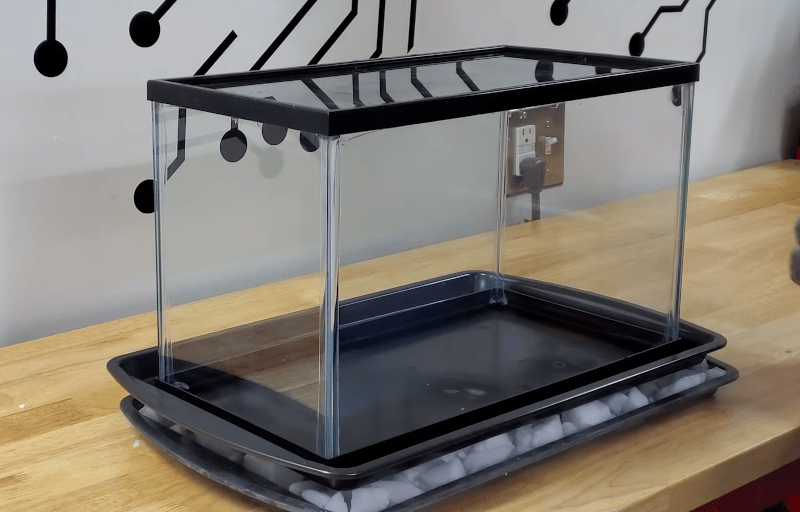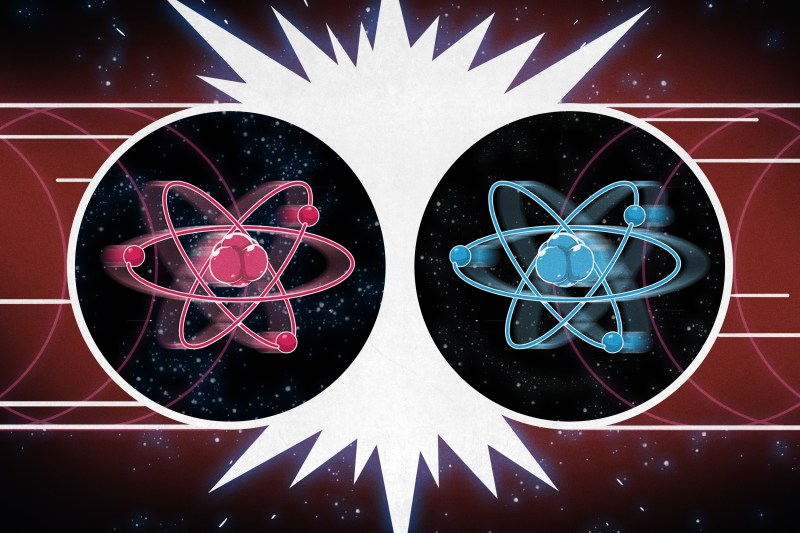Demo Relativity for a C-Note

If you are a science fiction fan, you probably hate the theory of relativity. After all, how can the Enterprise get to a new star system every week if you …read more Continue reading Demo Relativity for a C-Note
Collaborate Disseminate

If you are a science fiction fan, you probably hate the theory of relativity. After all, how can the Enterprise get to a new star system every week if you …read more Continue reading Demo Relativity for a C-Note

GPS is a handy modern gadget — until you go inside, underground, or underwater. Japanese researchers want to build a GPS-like system with a twist. It uses cosmic ray muons, …read more Continue reading Cosmic Ray Navigation

You might think that particle physicists would be sad when an experiment comes up with different results than their theory would predict, but nothing brightens up a field like unexplained …read more Continue reading The Mysterious Wobble of Muons
Need a random number? Sure, you could just roll a die, but if you do, you might invite laughter from nearby quantum enthusiasts. If it’s truly, unpredictably random numbers you need, look no farther than the background radiation constantly bombarding us from the safety of its celestial hideout.
In a …read more
There’s something compelling about high-altitude ballooning. For not very much money, you can release a helium-filled bag and let it carry a small payload aloft, and with any luck graze the edge of space. But once you retrieve your payload package – if you ever do – and look at the pretty pictures, you’ll probably be looking for the next challenge. In that case, adding a little science with this high-altitude muon detector might be a good mission for your next flight.
[Jeremy and Jason Cope] took their inspiration for their HAB mission from our coverage of a cheap muon …read more
Continue reading Cheap Muon Detectors Go Aloft on High-Altitude Balloon Mission
An Astrobiology study proposes that an ancient supernova could have exposed Megalodon and other large ocean animals to deadly muon radiation. Continue reading Scientists Think an Exploding Star Helped Kill Off the Megalodon
A little over a year ago we’d written about a sub $100 muon detector that MIT doctoral candidate [Spencer Axani] and a few others had put together. At the time there was little more than a paper on arxiv.org about it. Now, a few versions later they’ve refined it to the level of a kit with full instructions for making your own under the banner, CosmicWatch including PCB Gerber files for the two surface mount boards you’ll need to assemble.
What’s a muon? The Earth is under constant bombardment from cosmic rays, most of them being nuclei expelled from supernova …read more
![]() Continue reading Make A Cheap Muon Detector Using Cosmicwatch
Continue reading Make A Cheap Muon Detector Using Cosmicwatch
Thanks to CERN and their work in detecting the Higgs Boson using the Large Hadron Collider (LHC), there has been a surge of interest among many to learn more about the basic building blocks of the Universe. CERN could do it due to the immense power of the LHC — capable of reaching a beam energy of almost 14TeV. Compared to this, some cosmic rays have energies as high as 3 × 1020 eV. And these cosmic rays keep raining down on Earth continuously, creating a chain reaction of particles when they interact with atmospheric molecules. By the …read more
![]() Continue reading Hackaday Prize Entry : Cosmic Particle Detector Is Citizen Science Disguised As Art
Continue reading Hackaday Prize Entry : Cosmic Particle Detector Is Citizen Science Disguised As Art
Subatomic physics is pretty neat stuff, but not generally considered within the reach of the home-gamer. With cavernous labs filled with racks of expensive gears and miles-wide accelerators, playing with the subatomic menagerie has been firmly in the hands of the pros for pretty much as long as the field has been in existence. But that could change with this sub-$100 DIY muon detector.
[Spencer Axani] has been fiddling with the idea of a tiny muon detector since his undergrad days. Now as an MIT doctoral candidate, he’s making that dream a reality. Muons are particles that are similar to …read more
![]() Continue reading Dirt Cheap Muon Detector Puts Particle Physics Within DIY Reach
Continue reading Dirt Cheap Muon Detector Puts Particle Physics Within DIY Reach